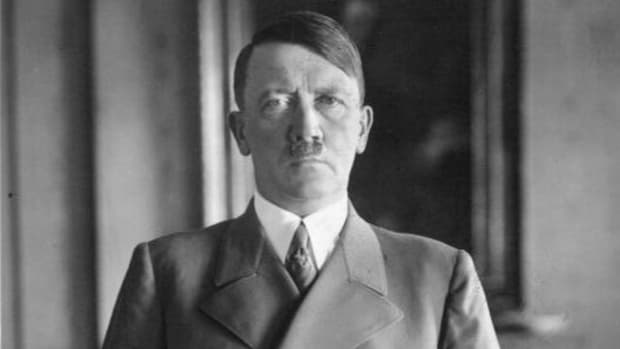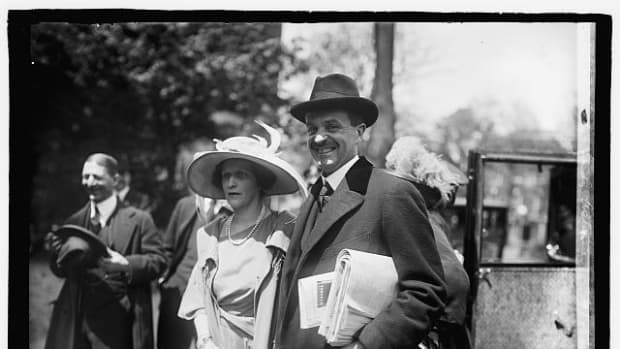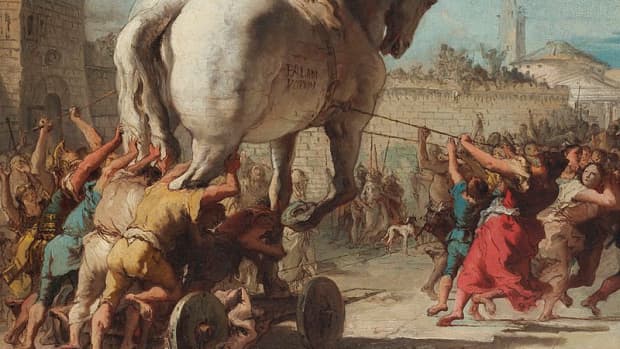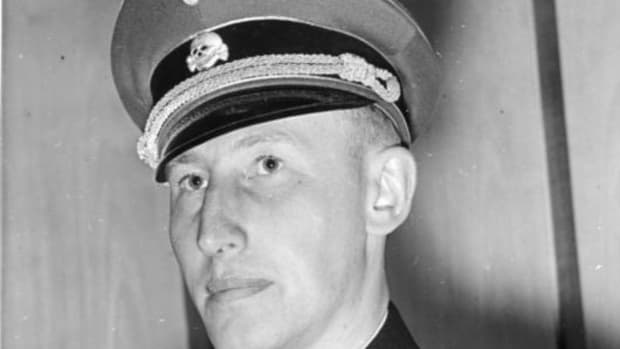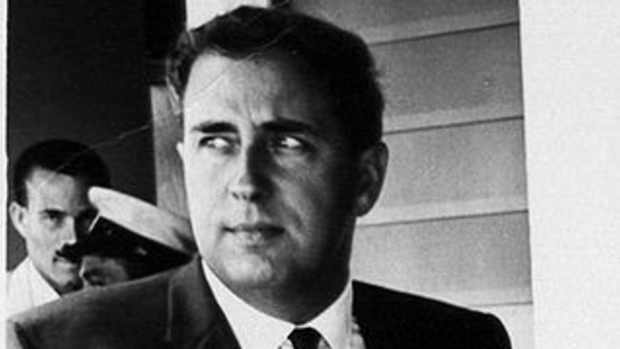Operation Foxley: The Allied Plot to Kill Hitler
Killing Hitler
During World War II, the Allies had created several plans aimed at taking out the Nazi leader of Germany.
Following the successful invasion of Normandy in June 1944, a new urgency was attached to assassinating Hitler in the hope of bringing about a quick end to the conflict.
The Special Operations Executive
In the darkest days of World War II, a clandestine outfit was created in London. Formed in 1940, the Special Operations Executive (SOE) was a volunteer force whose objective was to cause mayhem behind enemy lines. British Prime Minister Winston Churchill gave the group his directive to “set Europe ablaze.”
The SEO's specialty was the sabotage of railways, bridges, and factories while encouraging and supplying guerrilla forces in occupied countries. The BBC reports that “[a]gents were taught how to kill with their bare hands; how to disguise themselves; how to derail a train; and even how to get out of a pair of handcuffs with a piece of thin wire and a diary pencil.”
Suitably equipped with such 007 gizmos as a single-shot cigarette gun, agents were parachuted into enemy-occupied territory. These courageous men and women had a short life expectancy.
Reinhard Heydrich
One successful SEO action was the assassination, in June 1942, of Heinrich Himmler's deputy Reinhard Heydrich, so bumping off Hitler was something that occupied the minds of its planners.
In the silent video below (at 0.45), Heydrich is shown holding papers and chatting with Himmler at the Berghof in 1940.
Early Plots to Kill Hitler
There were several unsuccessful attempts on Hitler's life that failed through bad luck—good luck, of course, from the Führer's point of view.
In London, the planners at SOE thought that Hitler presented the best target when he was aboard his train. But, that seems odd because the train was fortified, and great precautions were taken to protect the special passenger. Troops inspected the proposed route for any trip in case bombs had been planted.
The train had engines at both ends, so it could still move if one locomotive was disabled. There was also a dummy train, and Hitler's travel schedule was never released ahead of time.
But, the devious minds at the SOE figured out a way of overcoming Hitler's elaborate security precautions.
Boffins in white coats developed a colourless, tasteless, and odourless poison. The idea was to sneak the lethal potion into the train's drinking water supply when it was being serviced. But, the plot required an inside accomplice, and the SOE was unable to recruit one.
The Berghof
The thinking turned to something simpler—using a sniper when Hitler's guard might be down. That would be when he was relaxing at his Bavarian retreat, the Berghof.
Recommended
World War II in Pictures notes that
“[w]hile always protected there by security detachments, anti-aircraft guns and the like, the Berghof compound itself was relatively unguarded. It was the one spot where Hitler felt free to go outside, breathe some fresh air, and not worry about his safety. He had always loved to walk in the mountains, and the Berghof offered him that opportunity, free of any cares.”
Operation Foxley
In a stroke of luck, the British had captured a German soldier in Normandy who turned out to be a former personal guard of Hitler's. This man revealed that at the Berghof, Hitler was in the habit of taking a 20-minute walk every morning. He also preferred to take his stroll unaccompanied.
But, for a man who was paranoid and secretive about his movements, Hitler helped out the Allied plot by having the Nazi flag flown at the Berghof when he was in residence.
By the middle of 1944, the SOE had established a wide network of informants and sympathizers. One of them, known as Heidentaler, ran a shop in Salzburg, just 12 miles from the Berghof.
The plan was to parachute a sniper and a German-speaking Pole to near Salzburg at night. They could hide out with Heidentaler and wait for the swastika flag to appear on the Berghof.
The plan was passed up the food chain until it landed on Churchill's desk. He gave it his approval, but there were doubters in the High Command.
Because Hitler had proved to be a terrible military strategist there was a strong argument in favour of keeping him in command of German forces. Others were concerned that killing him might turn him into a martyr and further stiffen German resolve to continue fighting.
Foxley Never Came to Pass
In the end, Hitler made his last visit to the Berghof on July 14, 1944, so time ran out for executing the plot. Six days later, Hitler survived an assassination attempt at his Wolf’s Lair headquarters in Rastenburg, Eastern Prussia. A group of disaffected Nazi officers placed a bomb in a conference room and, by a fluke, Hitler escaped the blast with only a perforated eardrum and a few scrapes.
After surviving many attempts on his life, it was left to Hitler himself to end his life. In his Berlin bunker, the war irretrievably lost, Hitler swallowed a cyanide pill and shot himself in the head. That was on April 30, 1945, and he was 56 years old.
Bonus Factoids
- Hitler knew he was a target for assassins and followed an unpredictable schedule to counter any attempts on his life. He also wore body armour when in public and it's believed his cap contained a metal plate.
- The Berghof was situated on the Obersalzberg mountainside between Berchtesgaden, Germany and Salzberg, Austria. Other high Nazi officials, Martin Bormann, Albert Speer, and Hermann Göring, had residences close by. Following the war, all the buildings were demolished to prevent them from becoming shrines to neo-Nazis.
- Many world leaders have been the targets of assassination. Security people working for Cuba's Fidel Castro claimed he was the target of 634 attempts. One of the most bizarre was a plan to blow him up with an exploding cigar.
- In the same area as the Berghof is the Kehlsteinhaus, better known by its English name, the Eagle's Nest. It was built by Martin Bormann as a 50th birthday present for Hitler. But the German führer made few visits to it because he was afraid of heights and found the elevator needed to reach the building claustrophobic. The Eagle's Nest still exists and is a much-visited tourist attraction.
Sources
- “The Special Operations Executive 1940 – 1946.” Nigel Morris, BBC, February 17, 2011.
- “Operation Foxley: The Plot to Kill Hitler in His Lair.” Robbie Mitchell, historicmysteries.com, undated.
- “6 Assassination Attempts on Adolf Hitler.” Evan Andrews, history.com, August 29, 2018.
- “Hitler Assassination Plan.” National Archives, undated.
- “Operation Foxley: Kill Hitler!” worldwartwo.filminspector.com, undated.
- “A Group of German Leaders Tried to Kill Hitler in 1944. Here’s Why They Failed.” Albinko Hasic, Time Magazine, July 19, 2019.
This content is accurate and true to the best of the author’s knowledge and is not meant to substitute for formal and individualized advice from a qualified professional.
© 2023 Rupert Taylor





